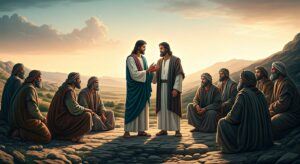 I will start by discussing a pillar event in Christianity: the founding of the Church by Jesus Christ. This is not only a historical event; it is fundamental to grasp Jesus’ mission and the great influence his teachings would have on human history.
I will start by discussing a pillar event in Christianity: the founding of the Church by Jesus Christ. This is not only a historical event; it is fundamental to grasp Jesus’ mission and the great influence his teachings would have on human history.
You will learn about the vital part the idea of “Church” performed right from the beginning of Jesus’ mission. Particularly in the Gospels, the New Testament contains certain critical texts where Jesus talks of establishing His Church. For instance, “and on this rock I will build my church, and the gates of Hades will not overcome it,” Jesus tells Peter in Matthew 16:18.
The choice of the Apostles is, in my view, equally important. Jesus established a group to convey his message, not alone shared it. In verses like Mark 3:13–19, where he names the twelve apostles, and in the Great Commission found in Matthew 28:16–20, where Jesus tells his disciples to go and make disciples of all nations, this is absolutely obvious.
Built by the Apostles and formed by Jesus, the early Church was more than just a community. It marked the start of a two- millennia faith legacy. From the Apostles to the founding of the early Church, this period of history prepares us for the next chapter we will explore: a vital connection demonstrating the developing execution of a divine plan.
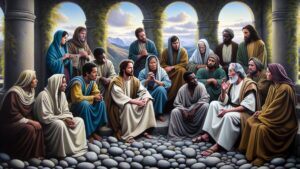
From the Apostles into the Early Church
The great roots and natural expansion of the early Church from the first set of Apostles to a large community of believers define its beauty, in my perspective. The change from the Apostleship to what became the early Church is evidence of both heavenly direction and human zeal; it did not happen over night.
The cornerstone, carefully chosen by Jesus and blessed with the Holy Spirit at Pentecost, were the Apostles They set forth audacious missions, shared Christ’s teachings, and founded communities of believers, so creating what we would know as Apostolic Succession. The idea is that the spiritual power given to the Apostles by Jesus has been passed down in an intact line of successors. Preserving the integrity and authenticity of the Church’s teachings depends on this.
Later on you will learn about the Church Fathers. Like Ignatius of Antioch, Polycarp, and Justin Martyr, these early leaders and thinkers left a wealth of books. Their letters and treatises are more than just relics from the past; they are vivid voices communicating across millennia providing unmatched insights into the life, organization, and theology of the early Church. Their stories support the hierarchical structure of the Church with assigned responsibilities, including bishops supervising local congregations, therefore highlighting a degree of organization that reflects the Catholic Church of today.
Early Church also did the walk as well as spoke the language. For the “breaking of the bread,” an act of worship that would eventually become what millions of people know as the Mass, it assembled routinely. Visible indicators of inner grace, the Sacraments, were also seen as spiritual pillars from baptism to the Eucharist, therefore reflecting continuity of worship and faith practices spanning the distance between the Apostles and the present-day Church.
Actually, we are following a flawless thread as we track the early Church’s footprints down from later decades to its beginning existence. This thread ensures that the fundamental goal—delivery of the gospel of redemption to all spheres of the earth—remains unaltered even as the institution has expanded enormously in size and scope.
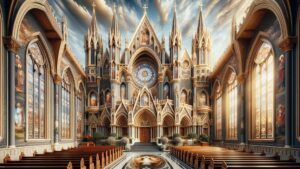
One, Holy, Catholic, and Apostolic
There are four clear indicators that define the actual character of the early Church when one understands its basic essence. Often recited in a profession of faith, these markers have great significance that ties Christians to the beginnings of their Church.
The adjective “one” denotes unity. The early Christians shared a single belief system despite geographical barriers and cultural variances. Under the Bishop of Rome, presently known as the Pope, the leadership developed central to this unity.
The label “Holy” points to the divine goal of the Church. Aspiring to a level of moral perfection, the early Church sought to be a vehicle of God’s grace, from charitable deeds to the sacramental sacrosanctity.
The “Catholic” label spoke more of universality than of denominations. This term emphasizes how the Church’s message, encompassing all civilizations and societies with its teachings, was meant for every part of the planet.
The name “Apostolic” grounds the Church squarely in the teachings and practices passed down from the Apostles themselves. It underlines constant continuity with the past, therefore preserving the faith deposit left to the earliest disciples of Jesus.
These four qualities combined created not only the basis of the early Church but also set the standards by which actual fidelity to Christ’s teachings could be measured. Understanding the mission and self-identity of the Church depends on them.
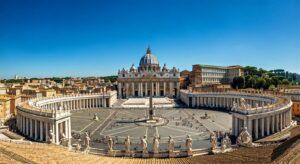
Persistent Patterns: The Continuum of the Early Church
You will learn about the resiliency and inventiveness of the early Jesus adherents. Established by Jesus and carried on by the Apostles, the Church evolved into a structure able to resist millennia of change. The cornerstone upon which its rich history rests is its basic lessons and methods.
Not everything is fixed now. The Church changed with society; it did so without compromising its core beliefs. This harmony between continuity and change is evidence of the Church’s solid basis. Choose something that speaks to you, whether it’s the Church’s capacity to meet fresh problems or the rigidity of custom.
Examining materials like the “Catechism of the Catholic Church” or the works of Church Fathers offers a lot of possibilities if you’re driven and yearning for more information. These materials provide a closer examination into the core of what has kept the Church growing and evolving over millennia.
I truly hope you leave with a feeling of the richness and longevity of the early Church. Your first try need not be your last as the road of faith is always changing and continuous. Remember: the courage, faith, and solidarity of that ancient community that still propel the Church on now reflects the roots of faith set by the early Church.
*Here’s a little transparency: Our website contains affiliate links. This means if you click and make a purchase, we may receive a small commission. Don’t worry, there’s no extra cost to you. As an Amazon Associate I earn from qualifying purchases.
Recommended Reading:
Catechism of the Catholic Church, Revised
The Early Church Was the Catholic Church
The Fathers Know Best: Your Essential Guide to the Teachings of the Early Church
When the Church Was Young: Voices of the Early Fathers
The Ante-Nicene Fathers, Volume 1: The Writings of the Fathers Down to 325 A.D.
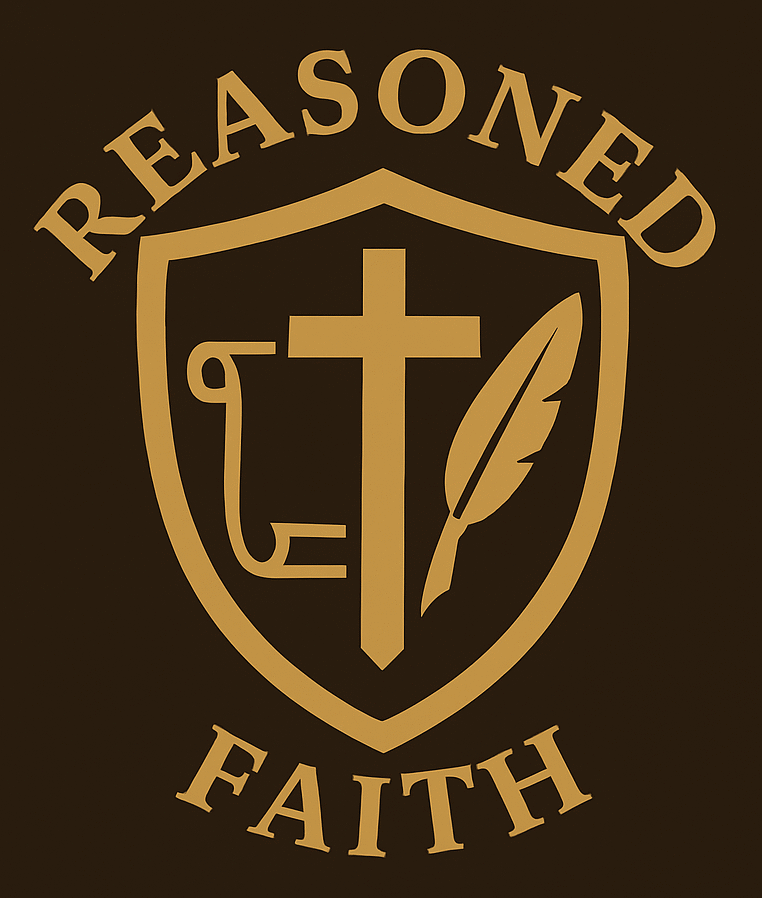
Hey, i have some questions (2) about this; What did you find most surprising about the role of the Apostles in the foundation of the early Church? The article mentioned the importance of early Church Fathers like Ignatius of Antioch; do you think their writings are still relevant today?
BTW good post!
Hey 0xteumessia, thanks for your questions! These are fantastic ones.
Most surprising about the Apostles? Two things really jumped out at me. First, their total commitment to spreading the Gospel. These were regular guys who witnessed some incredible things with Jesus, and they just couldn’t keep it to themselves! They faced danger, ridicule, everything, but they kept sharing. Pretty inspiring stuff, right?
Second, the authority Jesus entrusted to them. Imagine being tasked with carrying on the message of this revolutionary teacher! The Apostles weren’t just spreading the word, they were laying the foundation for the entire Church. That’s some serious responsibility Jesus placed on their shoulders.
Early Church Fathers’ relevance? Spot on! These folks were the first generation to wrestle with Jesus’ teachings and how to live them out. Their writings are like getting a glimpse into the minds of the Church’s great-grandparents. Sure, the world’s changed a lot, but the big questions about faith, community, and living a good life are timeless. So yeah, definitely worth a look!
This article offers a compelling and informative exploration of the early Church. By tracing the Church’s origins from its foundation by Jesus Christ to its evolution into a structured institution, I love how you create a clear and engaging overview. The emphasis on the role of the Apostles, the significance of the Church Fathers, and the enduring nature of its core beliefs contributes to a comprehensive understanding of this pivotal period in Christian history. The article effectively highlights the Church’s continuity while acknowledging its adaptability, making it a valuable resource for both seasoned believers and those seeking to deepen their knowledge…How did the early Church balance maintaining the core teachings of Jesus Christ with adapting to the evolving cultural and societal landscapes of different regions and time periods?
Thank you for your insightful feedback on the article about the early Church. To address how the early Church balanced maintaining the core teachings of Jesus with adapting to evolving cultural and societal landscapes, it’s essential to highlight a few key aspects. The early Church remained anchored in Christ’s core teachings, which provided a strong doctrinal foundation. At the same time, as the Church expanded into various regions, it adeptly contextualized its message to resonate with diverse cultures, ensuring effective communication without compromising core doctrines. The guidance of the Holy Spirit played a crucial role in navigating new challenges, while ecumenical councils helped refine and articulate teachings in response to emerging issues. Despite regional variations, the Church maintained doctrinal unity through foundational creeds and Apostolic teachings. This dynamic approach allowed the early Church to remain both faithful to its origins and responsive to the diverse needs of its growing global community.